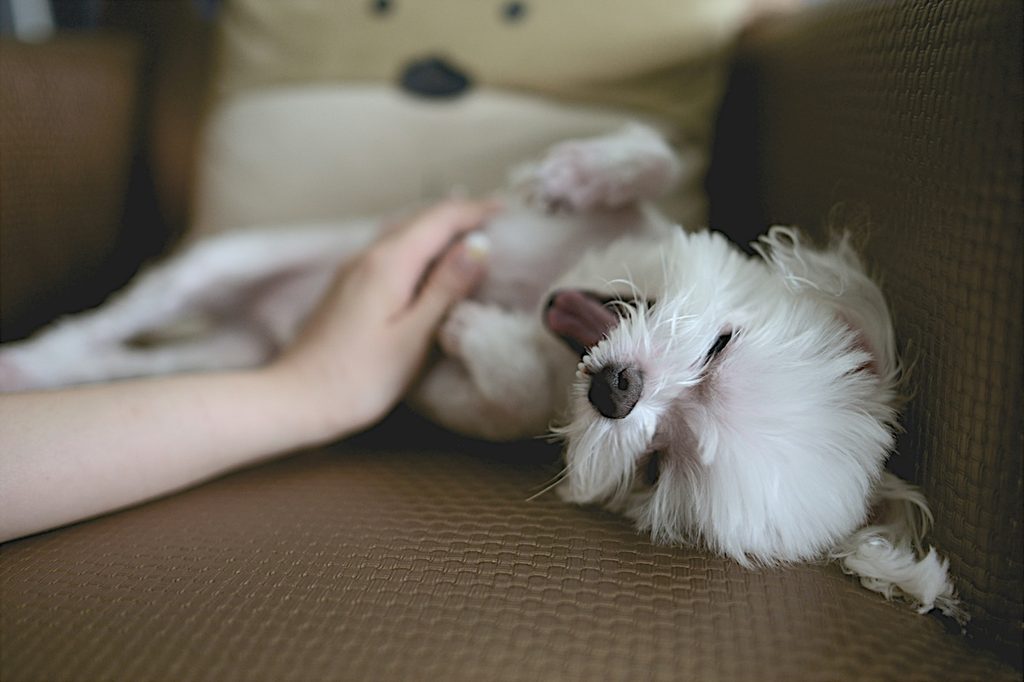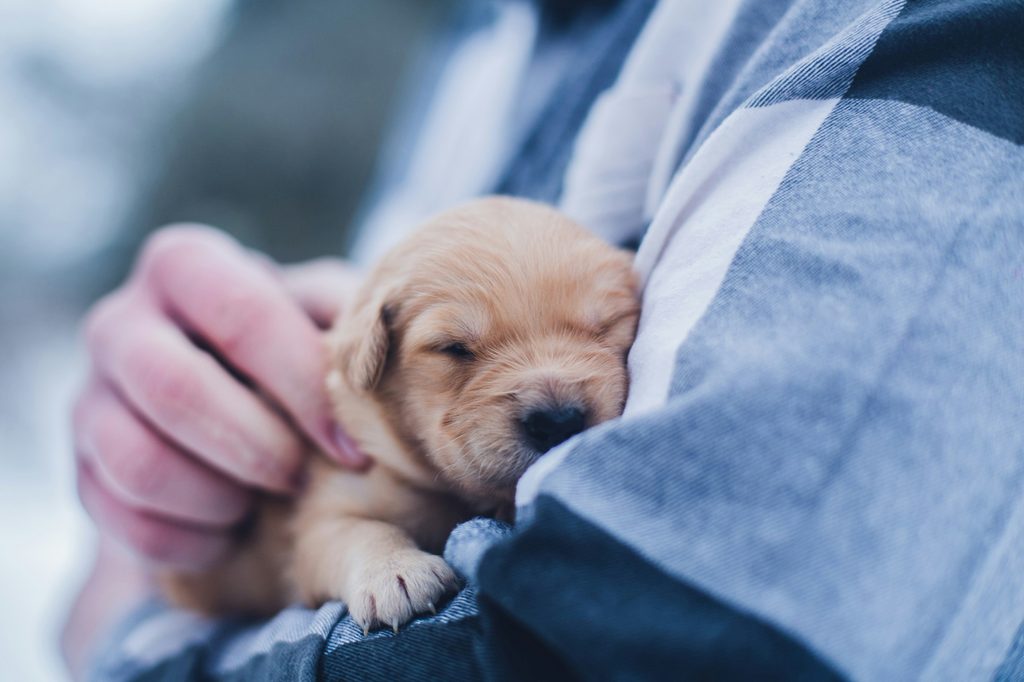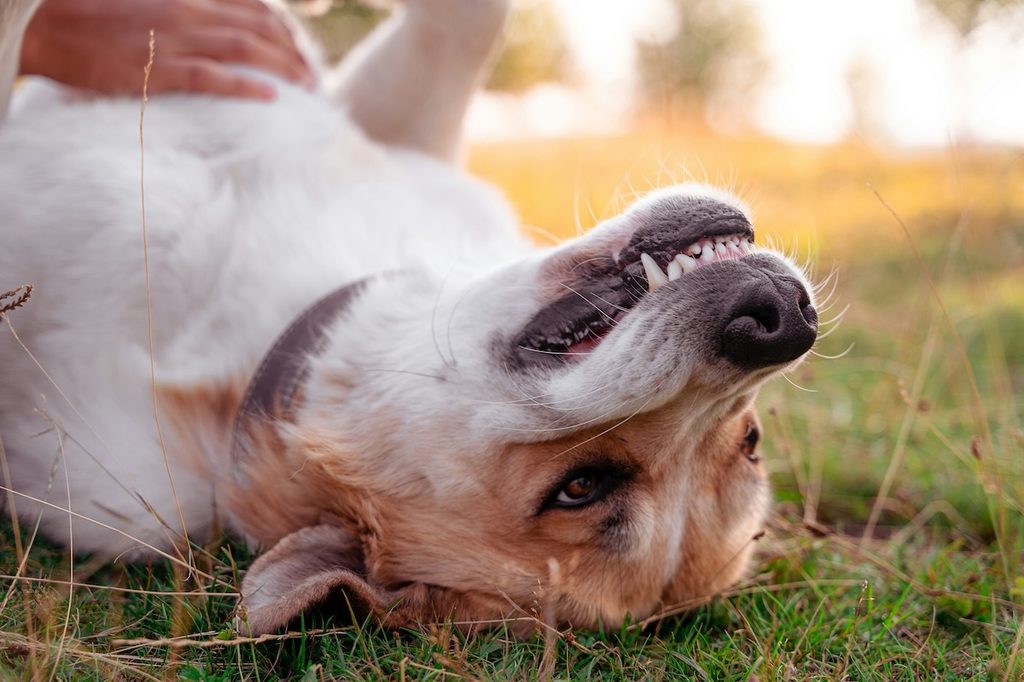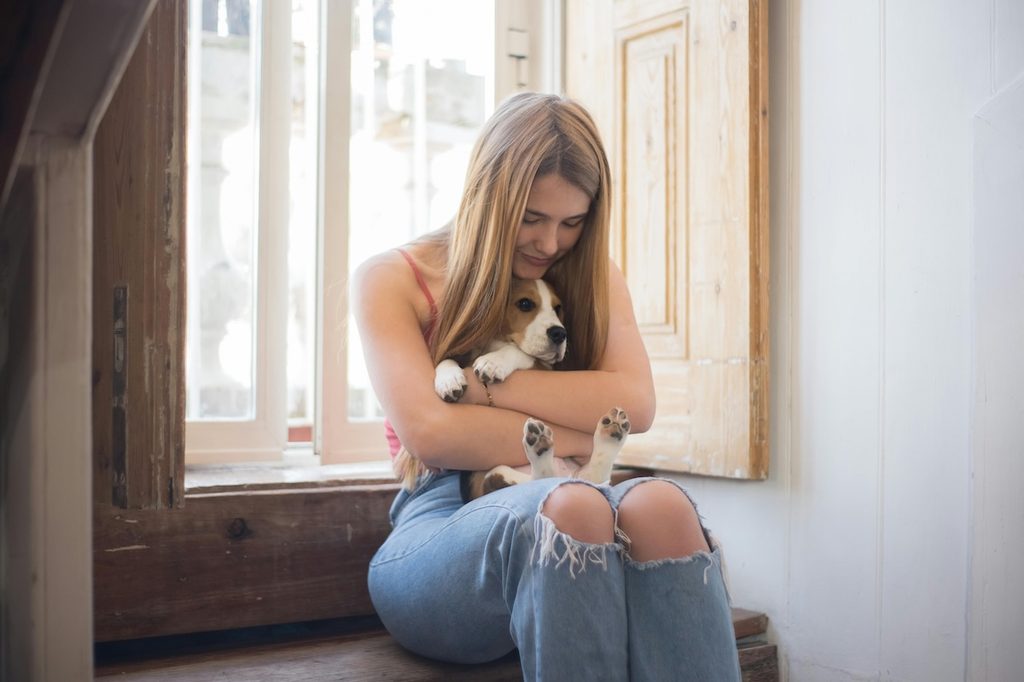Tickling is a bit controversial in the human world. Though a person may laugh, they may seriously dislike being tickled. The belly is a common spot where a human may be ticklish and, therefore, not enjoy touch. Dogs? Many love a good belly rub. You may wonder: Do dogs like being tickled? Backing up, are dogs ticklish?
Generally speaking, understanding where and how your dog likes touch can improve your bond. Naturally, pet parents want cuddling, snuggling, and belly rubbing to be a positive experience for their furry friends. Dogs can’t talk (or laugh), but they will give us subtle and obvious hints about whether they are enjoying a specific sensation. Pups will also give off signs to indicate whether they are ticklish. Here’s how to notice them and when to back off.
Are dogs ticklish?

Dogs won’t hysterically laugh, scream “stop,” or try to wiggle away when you tickle them like a human will. However, they have nerve endings on their skin similar to a human’s that can trigger a tickling sensation known as knismesis. Knismesis is sort of like goosebumps, itching, or the feeling you get when a bug lands on you (hence why a dog might reflexively scratch or move their leg like they are about to start itching when tickling).
Knismesis isn’t the same as gargalesis (which hysterical laughing people may exhibit during a tickle session, even if they are not remotely enjoying themselves). Scientists don’t believe dogs have this sensation.
Where are dogs most ticklish, and how do you know if you’re tickling your dog?

Every dog is different, but some of the most common spots dogs feel ticklish are:
- Their paw pads, especially if they don’t have much hair there
- The bases of the tail or neck, which are full of nerves
- The ears, which are very sensitive (again, due to nerves)
- Armpit area
- Belly
Determining whether your dog is ticklish (and where) is a matter of trial and error. You can run little “experiments” during snuggle sessions to see how your pet reacts to specific touches. Some signs you found a ticklish area include:
- Nose wrinkling
- Sneezing
- Ear flicking
- Twisting their back
- Leg kicking
- Pulling a foot away
Does my dog like being tickled?

The answer isn’t black and white because each dog experiences touch and sensations differently. Complicating matters, dogs aren’t going to come out and tell you that they want you to stop tickling or petting them using human language. However, your pet will absolutely send you some memos about how they really feel. You’ll want to tune into your dog’s verbal and nonverbal (body language) cues to determine whether they love or loathe being tickled (or pet in any way).
Signs your dog is enjoying a pet, including tickling, are:
- Relaxed ears
- Loose or wagging tail
- Partially open mouth
Hints your dog isn’t into a particular type of touch are:
- Growling
- Raised hackles
- Stiff posture
- Stiff tail
If your dog is new to your family, you might try stroking them in certain places and gauging body language. Positive body language is your cue to keep going. Negative? With all due respect, take a hint.
Importantly, a dog might love being pet a certain way for years and then suddenly react negatively. Sometimes, a dog’s feelings simply change. However, this swift shift can be a sign of a medical issue, such as a bellyache, ear infection, or ingrown toe nail. These issues range in severity, but prompt vet care can help your dog feel more comfortable and healthier.
Concluding thoughts

Dogs have nerve endings all over their bodies that are sensitive to touch. These nerve endings are similar to the ones that humans have, which trigger tickling. Dogs are most ticklish on their bellies, paws, ears, base of their necks/tails, and armpit area. Some dogs like tickling more than others. Keep an eye on how they react to specific touches in particular areas. Happy dogs will show a relaxed posture and stay near you. Dogs that aren’t into a touch will move away and may growl or display raised hackles on their backs. In these cases, your best bet is to back off — you want pets to have positive experiences that enhance your bond.
Sometimes, a dog will love being touched in an area only to do a 180-degree shift without notice. This could be a red flag that they are having a medical issue, so give the vet a call to rule out any concerns. If you’re unclear about dog body language, a trainer or your vet can provide insights.




